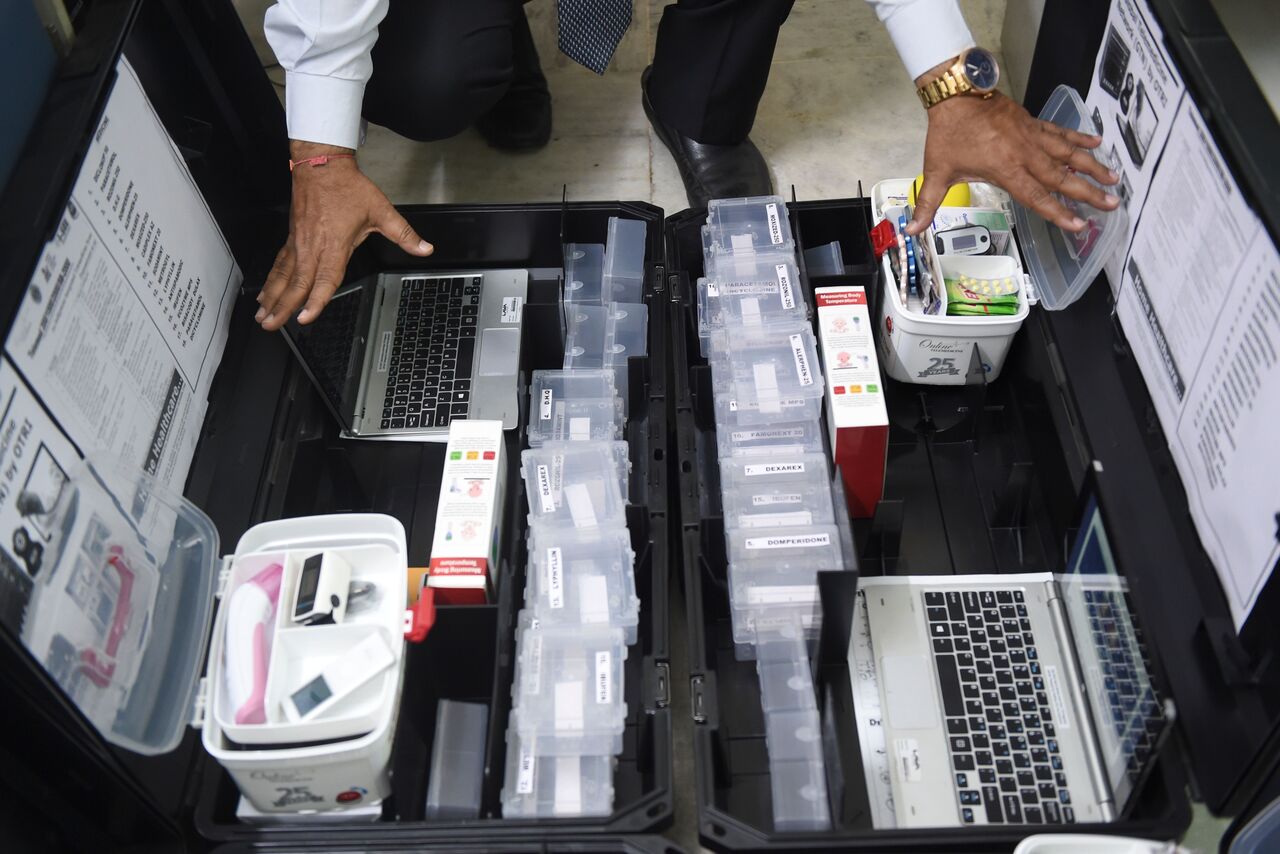Telemedicine witnesses rapid growth in India amid coronavirus pandemic
Sign up now: Get insights on Asia's fast-moving developments

The number of patients using telemedicine consultation platforms has seen a big jump.
PHOTO: AFP
Follow topic:
NEW DELHI - The Covid-19 pandemic has fast-tracked the adoption of telemedicine in India as both businesses and people adjust to a new normal. While it has been used for around two decades, primarily to bring healthcare to rural areas, it received a fillip when the government issued guidelines in March to formalise its mass use.
Since then, the number of patients using telemedicine consultation platforms has seen a big jump because of restricted mobility amid the lockdown that began on March 25, as well as the fear of contracting a Covid-19 infection at hospitals and clinics.
For instance, telemedicine consultations on Practo, one of the key players in this sector, have grown five-fold between March and mid-May. With around 100,000 doctors on its panel, the platform was primarily used before the lockdown to facilitate offline appointments between doctors and patients.
However, many of these doctors have since then resorted to using Practo's telemedicine service to work around pandemic-related restrictions. "It has helped them follow up with their chronic patients, besides preventing potential cross infections at their outpatient departments and thereby protecting their staff and others," Dr Alexander Kuruvilla, chief strategy officer for Practo, told The Straits Times.
According to Inc42's DataLabs that researches the Indian tech and start-up ecosystem, the telemedicine market here is expected to grow from US$829 million (S$1.2 billion) last year to US$5.41 billion in 2025. Its growth was limited earlier because of the lack of clear guidelines on issues such as data privacy, patient consent and drugs that can be prescribed via telemedicine.
Besides being fully backed by the government now, the growth of the telemedicine industry is also expected to be boosted by enhanced access to mobile Internet, cheaper availability of medical devices and behavioural changes induced by the pandemic.
"Just as people were forced to switch to digital payments because of demonetisation, now I think for the foreseeable future, both because of the lockdown as well as the fear of infections, people will start using telemedicine as a viable option," said Mr Raghavendra Prasad TS, a Bangalore-based technology entrepreneur who currently focuses on rural development.
He is also part of a team behind Project StepOne, a telemedicine volunteer network that connects callers to doctors for coronavirus-related advice. Operational in seven states, it has facilitated more than 80,000 consultations since March 30.
Hospitals too have adopted telemedicine amid the pandemic, such as the Sanjay Gandhi Postgraduate Institute of Medical Sciences (SGPGIMS) in Lucknow, a state government institution in Uttar Pradesh. It uses telemedicine in its Covid-19 ward to limit doctors' exposure to patients and paramedical staff there.
It has also switched its outpatient departments to tele-OPDs that handle anywhere between 500 and 1,000 consultations every day. "This avoids the need for patients to come to the hospital for routine queries," said Mr Repu Daman, who manages the telemedicine network that covers SGPGIMS.
Telemedicine holds immense potential to widen access to quality medical care in India where more than half of the population lives in rural areas but the majority of doctors - nearly four of five - are based in urban areas. Mr Daman also oversees the government's national resource centre of the National Medical College Network that currently links 50 medical colleges with each other. Besides sharing academic material, this network will eventually be linked with the government's health and wellness centres for healthcare delivery using telemedicine.
Among the many adopting telemedicine enthusiastically these days is Dr Neeraj Bhalla, the senior director of cardiology at BLK Super Speciality Hospital in Delhi. While he used the phone for "informal" advice earlier, the lockdown has seen him sign on to telemedicine platforms for a more structured approach that relies on video calls. He even advises his chronic patients to purchase devices, such as those to measure blood pressure, sugar and oxygen saturation levels so that they can share these readings with him.
"Telemedicine is definitely useful for follow-ups with chronic patients who are comfortable with you and whose (medical) history you know," Dr Bhalla told The Straits Times. He, however, said it cannot replace the first physical consultation that involves detailed history taking, investigations and helps build a rapport between the doctor and the patient. "All three things are difficult to do on a telemedicine platform," he added.

